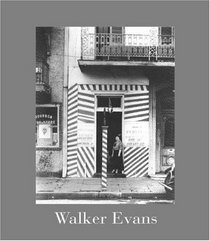Search -
Walker Evans
Walker Evans
Author:
A tenant farmer's deprivation-lined face. Antebellum homes that have seen better days. The display windows of small-town main streets. The early subway commuter. Billboards. The images made by photographer Walker Evans (1903-1975) are icons of national identity that have shaped Americans' views of themselves and directly influenced important cur... more »
Author:
A tenant farmer's deprivation-lined face. Antebellum homes that have seen better days. The display windows of small-town main streets. The early subway commuter. Billboards. The images made by photographer Walker Evans (1903-1975) are icons of national identity that have shaped Americans' views of themselves and directly influenced important cur... more »
ISBN-13: 9780691050782
ISBN-10: 0691050783
Publication Date: 1/31/2000
Pages: 332
Rating: ?
ISBN-10: 0691050783
Publication Date: 1/31/2000
Pages: 332
Rating: ?
0 stars, based on 0 rating
Publisher: Princeton University Press
Book Type: Hardcover
Other Versions: Paperback
Members Wishing: 1
Reviews: Amazon | Write a Review
Book Type: Hardcover
Other Versions: Paperback
Members Wishing: 1
Reviews: Amazon | Write a Review
Genres:
- Arts & Photography >> Individual Artists >> ( D-F ) >> Evans, Walker
- Arts & Photography >> Photography & Video >> Collections, Catalogues & Exhibitions
- Arts & Photography >> Photography & Video >> Photographers, A-Z >> General
- Arts & Photography >> Photography & Video >> Photo Essays




